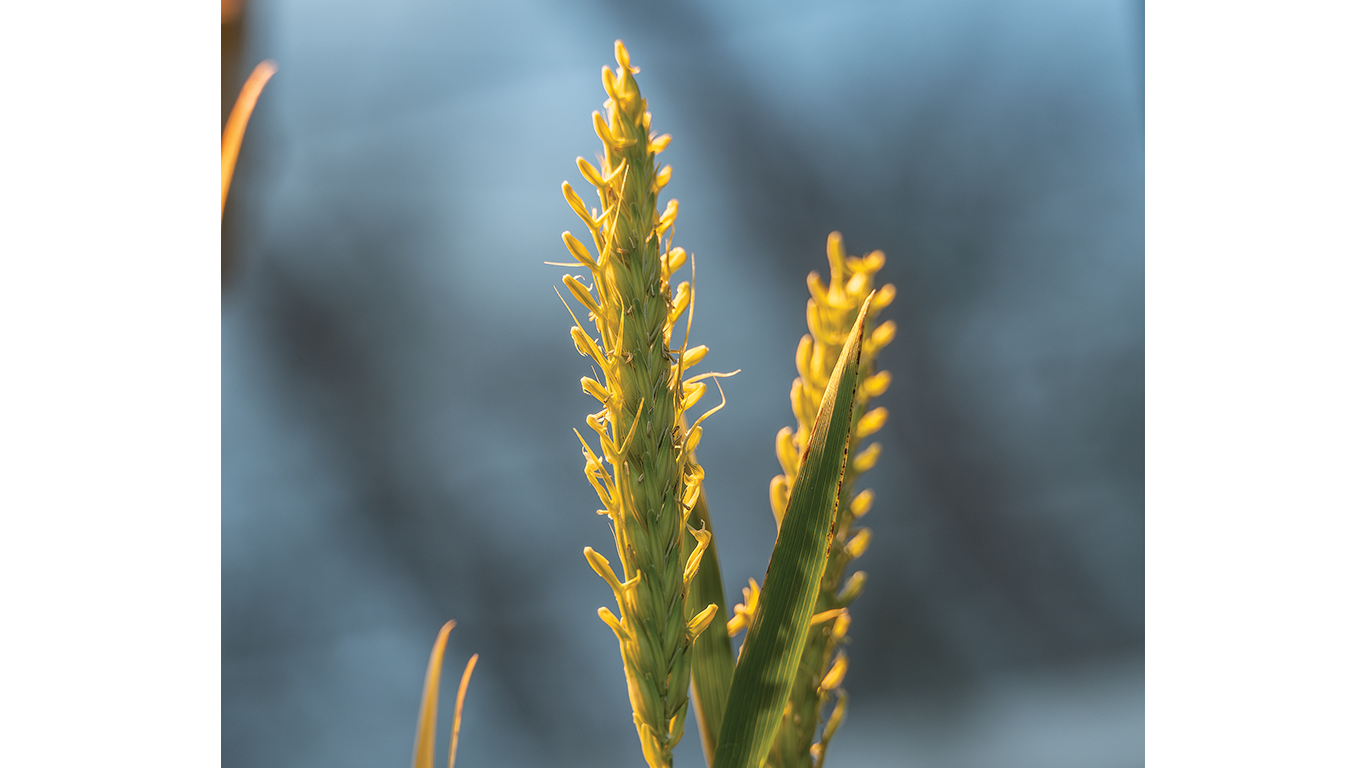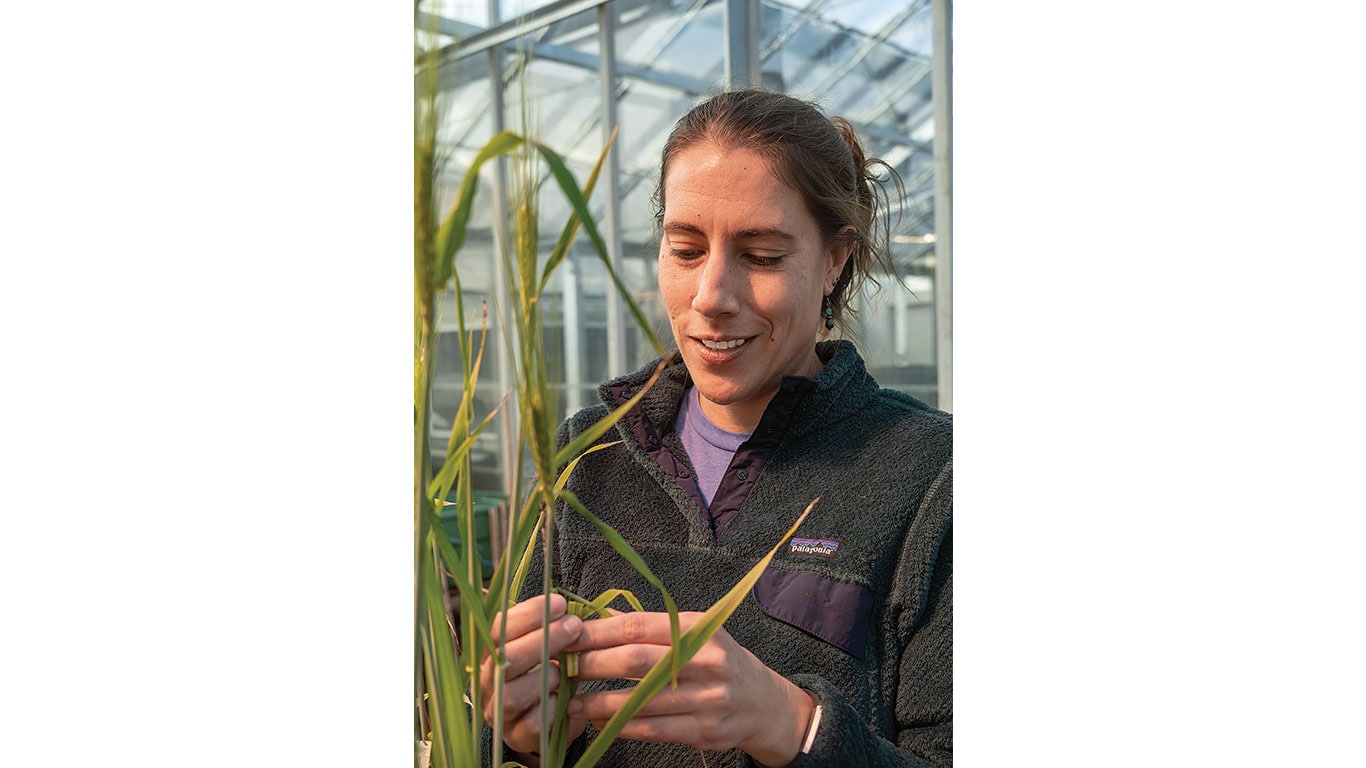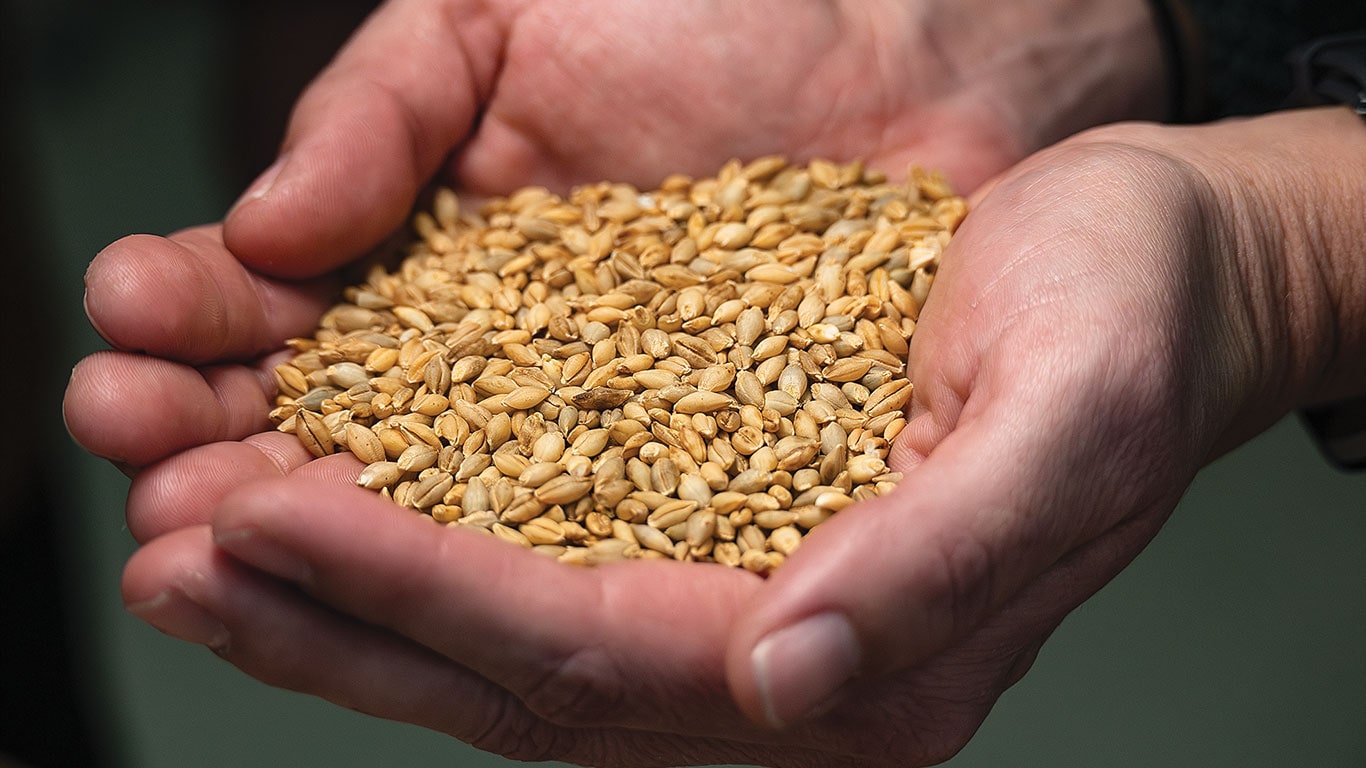Agriculture, Specialty/Niche November 01, 2025
Farm Naked
Naked barley is gaining ground…and fans.
Story and Photos by Steve Werblow
Naked barley is the sort of crop that captures headlines because of its catchy name—which is certainly more captivating than "hulless barley" or "loose-hulled barley"—but also because it could help open up new excitement for barley in the human food market. Naked varieties can also route into feed barley markets, and research into malting them may create additional opportunities.
One of the industry's proponents of barley—naked or not—is Brigid Meints, assistant professor of practice and Extension specialist in organic grains and pulses at Oregon State University.
"I think barley makes a great rotation crop," Meints says. "It creates a lot of biomass that can be worked back into the soil—building up organic matter is really important. It typically requires less nitrogen than other cereals, and comes out of the field earlier.
"In the Midwest, they are looking at double-cropping soybeans after winter barley," she adds. "I'm really excited to start doing research on inter-cropping a small grain with a garb [garbanzo beans, or chickpeas] for an additional cash crop if you can separate the seeds, or a low-growing clover that you can harvest for seed or just use for nitrogen fixation."
Above. Brigid Meints at Oregon State University is seeking smut resistance in naked barley to help organic growers succeed. Oregon State's Andrew Ross has developed recipes for baked goods utilizing naked barley. This Buck naked barley is a popular variety; an anthocyanin-rich purple naked variety is on the way.
Nutritious. Processing naked barley gives it a leg up on "covered" varieties with hulls. Pearling barley for human consumption is a process of polishing off the tight hull of most varieties, which also grinds away some of the nutritious bran and germ of the seed. Since naked barley hulls drop off easily, those varieties can be used as whole grains—a selling point for health-oriented consumers.
Earlier efforts to breed naked barley for the health food market focused on beta-glucan, a soluble dietary fiber that can help reduce cholesterol and boost the immune system. Barley can deliver more beta-glucan than many other grains can. However, high levels of beta-glucan can create a sticky mess in dough or malt, and digestive distress in consumers. As a result, Meints and other naked barley breeders are selecting for more moderate levels of the fiber in their newer varieties.
That's good news to Andrew Ross, an Oregon State University food scientist who specializes in developing recipes for grain products and works closely with Meints. Ross notes that barley can create great baked goods, but comes with challenges.
"We've got to go through the same kinds of gymnastics that you might do for making gluten-free products because barley doesn't have functional gluten, although celiacs are still sensitive to it," Ross explains. "I think that's hurt barley a little bit because it can't be popularized in the gluten-free market." However, barley is great in cookies, muffins, everything bars, and scones, says Ross. He has even nixtamalized naked barley—the ancient process of soaking grain in an alkaline solution— and made outstanding tortillas.
With victories in the kitchen and a long-established market for feed barley, the final hurdle for naked barley is in the high-paying malt segment. Malting barley is sprouted, then its sugars and starches are fermented to make beer and liquor.
Meints notes that hulls don't contribute starch or sugar for fermentation, so per-ton alcohol yields can be significantly higher for naked barley. Hulls may also contribute off-flavors. However, hulls protect embryos from damage, so germination in the malthouse can be higher for covered barley. Hulls also speed drainage in the brewing process.
Meints—and fellow breeders at the University of Saskatchewan and University of Minnesota—are working with maltsters and brewers on varieties and brewing techniques. Meints plans to test blends of naked and covered varieties in brewing. Success could help open all three barley markets to naked varieties.
"There's a lot of interest out there," says Meints, noting that naked barley can boost the whole barley sector. "It's a crop that currently has a pretty small footprint, but a lot of potential." ‡
Read More

AGRICULTURE, EDUCATION
The Protein Turning Heads and Herds
The milk of the 1990s is not what we're making anymore.

AGRICULTURE, SPECIALTY/NICHE
Winter Rhubarb?
Ontario farm's early fresh treat fills the hunger gap.




